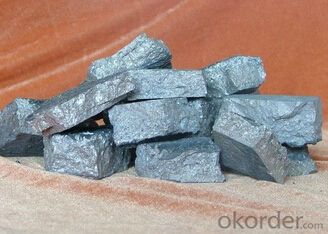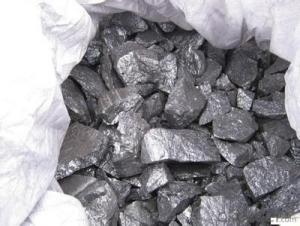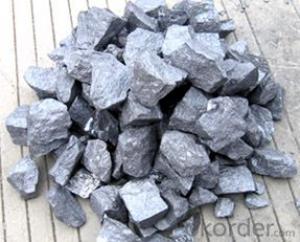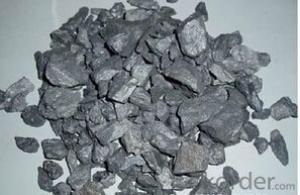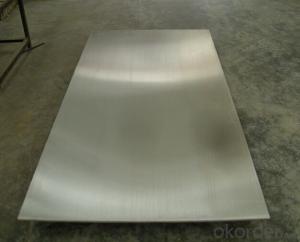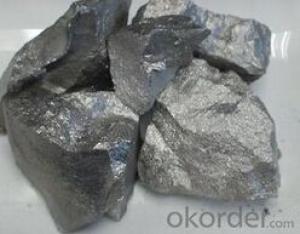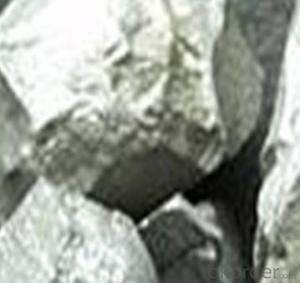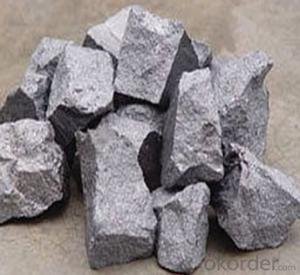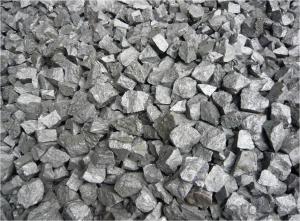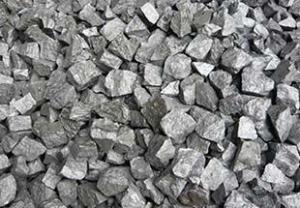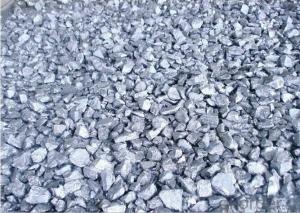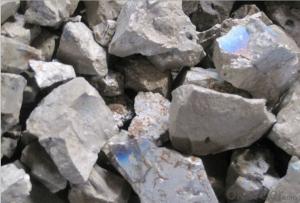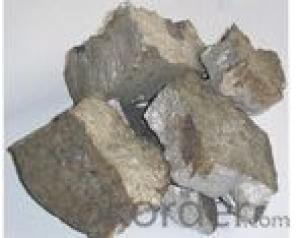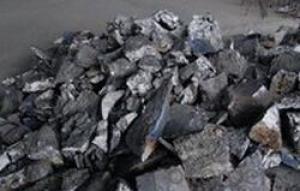Ferroalloy Type Ferrosilicon FeSi 72%
- Loading Port:
- China Main Port
- Payment Terms:
- TT OR LC
- Min Order Qty:
- -
- Supply Capability:
- -
OKorder Service Pledge
OKorder Financial Service
You Might Also Like
Specifications
The BEST price & quality for various Ferrosilicon 75%, 72%, 70%etc.
FERRO SILICON
Ferro Silicon is a ferroalloy an alloy of iron and silicon with between 15% and 90% silicon. It contains a high proportion of iron silicides. Its melting point is about 1200 °C to 1250 °C with a boiling point of 2355 °C. It also contains about 1% to 2% of calcium and aluminium.
Application: Ferro Silicon is usually used in steel industry as a deoxidizing material and it is also used as a bud or spraut in the Moulding industry. It also has major applications as deoxidizing material in steel manufacturing and alloy manufacturing industries, in the production of cast iron and steel, making improvement in the metallic structure and granulation in the molding of alloy and non-alloy cast irons, restoration of other Ferro alloys, and especially in the structure of nouvelle alloy steel.
The specification of Ferro Silicon (55%, 65%, 70%, 75%, 80%, etc.) :
Chemical Composition % | Type | ||
FeSi 75% min | FeSi 72% min | FeSi 68% min | |
Si ≥ | 75.0 | 72.0 | 68.0 |
Al ≤ | 2.0 | 2.0 | 2.0 |
Ca ≤ | 1.0 | 1.0 | 1.0 |
Mn ≤ | 0.4 | 0.5 | 0.6 |
Cr ≤ | 0.3 | 0.5 | 0.5 |
P ≤ | 0.035 | 0.04 | 0.04 |
S ≤ | 0.02 | 0.02 | 0.02 |
C ≤ | 0.01 | 0.2 | 0.2 |
Size (mm): 10-50mm, 10-100mm | |||
Note: Special requirements should be decided through negotiation between the seller and the buyer.
Packing: In plastic woven bags of 1,000kg net each.
- Q: What's the use of recycling cemented carbide?
- In the cutting tool is also hard alloy materials, recycling can be re - cemented carbide cutting tools ah.
- Q: Can CBN wheels grind cemented carbide? Why?
- Cubic boron nitride (CBN) grinding wheel is not suitable for grinding carbide and non-metallic hard materials. Cubic boron nitride (CBN) grinding wheel is suitable for processing several material products: high manganese steel; high chromium nickel molybdenum alloy steel; the chilled cast iron (HS80 ~ 90); the various types of hardened steel (HRC55 ~ 65); various types of iron (HB200 ~ 400), and has been in the domestic car (gear, flywheel, shaft, bearing, roller, machining) (slurry pump impeller, volute, shield, sheath and other processing) and mould, the glass cylinder; and the gem high hardness of soft and ductile materials, the high hardness in all walks of life to machining processing of materials, and can enhance the working efficiency. Greatly saves processing time and power and gain huge economic benefits.
- Q: Welding hard alloy cutter, hard alloy cutter, high speed steel, ceramic knife head head are what are the advantages and shortcomings?
- Long life, than the average speed of life only about 10 times, but the price is high, because the hard, so relatively crisp!
- Q: What is steel bonded carbide? What are its characteristics?
- Steel bonded carbide in steel bonding, with carbide (mainly titanium carbide, tungsten carbide) do hard phase composite material manufactured by powder metallurgy method. The microstructure is fine hard phase dispersed evenly distributed in the steel matrix (for steel bonded hard alloy mould substrate is mainly used chromium, molybdenum and vanadium in high carbon alloy tool steel or high speed steel).
- Q: How much does carbide WC contain?
- Tungsten cobalt carbideThe main ingredients are tungsten carbide (WC) and binder cobalt (Co)The brand is from "YG" ("hard cobalt" Pinyin prefix) composition and percentage of average cobalt content.
- Q: What are the meanings of cemented carbide codes, such as YW, YS30, YN10?Which company made its own brand? What is the composition?
- Hard alloy is one of the people familiar with the tools and materials, it is very difficult to weld by hard metal carbides (we, Tie) of powder metallurgy with CO, MO and NI as sintering binder. Its mechanical, physical and mechanical properties depend mainly on the kinds of metal carbides, properties, quantities, grain sizes, types and components of binders.In cemented carbides, the proper addition of Tie increases the content of hard Tic, and the higher the hardness of the alloy. The more the content of cobalt in the bonding phase, the lower the hardness of the alloy. Therefore, the hardness of We-Tie-eo alloy is higher than that of We-eo alloy. The hardness of We-eo alloy can be increased by adding Tae or Nbc. The higher the hardness of the cemented carbide, the better the wear resistance, but the lower the strength (bending), and the addition of Tac will improve the blade strength, while strengthening the blade resistance to fragmentation and breakage, fatigue strength also increased. Generally, the higher the hardness, the lower the toughness. In China's Cemented Carbide standard YB850-75, most carbide grades are We-Co (YG) and We-Tie-Co (YT) two.Domestic hardness alloy grade control: GB, brand ISO, P10, P20, M10, M20, K01, K10, K20, K30, domestic uniform brand YT15, YT14, YT5, YW1, YW2, YG3, P30, YG6x, YG6, YG8
- Q: It is hard alloy steel
- Tungsten steel and hard alloy: tungsten carbide is the difference is a. Tungsten is raw material for smelting ferrotungsten adding steelmaking process in molten steel for tungsten and also called high speed steel or tool steel, the tungsten content in 15-25%; and the hard alloy is used in powder metallurgy process of tungsten carbide and cobalt as the main body or other binding metal sintering, the tungsten content in general in more than 80%. Simply put, all the hardness go more than HRC65 things, as long as the alloy can be called carbide.
- Q: I would like to use carbide cutting tools, car work, ordinary A3 steel or 45 steel, lathe speed to play more appropriate, the workpiece surface quality is better?
- LZ, I don't know if you did it for eight years or eight years. When you finish the car hit 1600 turn, your knife is a diamond? I'll ask you to open 6 is the number of mid-range lathe wire ah, the general lathe open open 6 mid-range at least twenty-six wire, when you finish turning with so high feed! Even if you use 1600 rpm and this knife, your surface is bright, but your workpiece roughness must be unqualified. Remember, finish is not roughness. You are good at the question. The cutting speed is based on what kind of cutting depth and amount of knife you choose when you rough the car. You don't say the exact size of the part you want to process. That's not good. The key experience is to rely on their own step by step, tired.
- Q: Carbide and carbon steel
- Carbon steel is a relatively traditional black metal material, according to the carbon content, nature, use, there are many categories. Carbon steels contain almost no alloying elements (except trace elements such as silicon, sulfur, phosphorus, etc.) during smelting. Carbon steel can be used for many daily purposes.Cemented carbide is a relatively new powder metallurgy material developed in recent years. The finish of the cemented carbide products is very high, even higher than that of ordinary quenched steel. Therefore, a machining tool that is often used as ferrous metal.
- Q: Import all carbide drill bit, mainly those brands
- Domestic is so cheap, why use foreign diamond brand is very good?
Send your message to us
Ferroalloy Type Ferrosilicon FeSi 72%
- Loading Port:
- China Main Port
- Payment Terms:
- TT OR LC
- Min Order Qty:
- -
- Supply Capability:
- -
OKorder Service Pledge
OKorder Financial Service
Similar products
Hot products
Hot Searches
Related keywords

